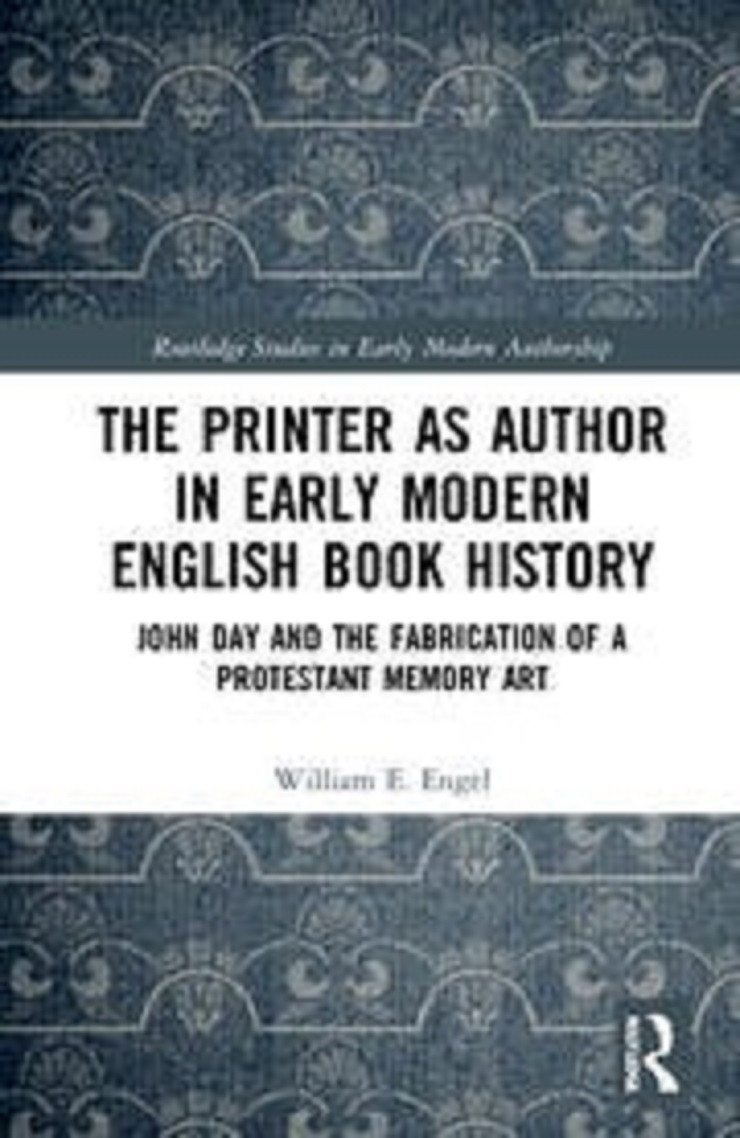
English Professor Bill Engel has written a book on The Printer as Author in Early Modern English Book History: John Day and the Fabrication of a Protestant Memory Art.
This is the first book to demonstrate how mnemotechnic cultural commonplaces can be used to account for the look, style, and authorized content of some of the most influential books produced in early modern Britain. In his hybrid role as stationer, publisher, entrepreneur, and author, John Day, master printer of England’s Reformation, produced the premier navigation handbook, state-approved catechism and metrical psalms, Book of Martyrs, England’s first printed emblem book, and Queen Elizabeth’s Prayer Book. By virtue of finely honed book trade skills, dogged commitment to evangelical nation-building, and astute business acumen (including going after those who infringed his privileges), Day mobilized the typographical imaginary to establish what amounts to—and still remains—a potent and viable Protestant Memory Art.
Table of Contents
Introduction: Incarnating Ideas
1 The deluxe design of The Cosmographical Glass (1559)
2 Renovating the Catechism (1553) and Metrical Psalms (1562)
3The grand enterprise of Foxe’s Book of Martyrs (1563)
4 Underwriting England’s first Protestant emblem book (1568)
5 The compelling visuality of Queen Elizabeth’s Prayer Book (1569, 1578)
Conclusion: Making History
Here is a link where you can see the chapter abstracts:
https://www.taylorfrancis.com/books/mono/10.4324/9780429032431/printer-author-early-modern-english-book-history-william-engel
And here is a link where you can preview the book (and read the first twenty pages):
https://www.routledge.com/The-Printer-as-Author-in-Early-Modern-English-Book-History-John-Day-and/Engel/p/book/9780367145880

For more information about Professor Engel's publishing and teaching activities, please click here: https://www.williamengel.org/

